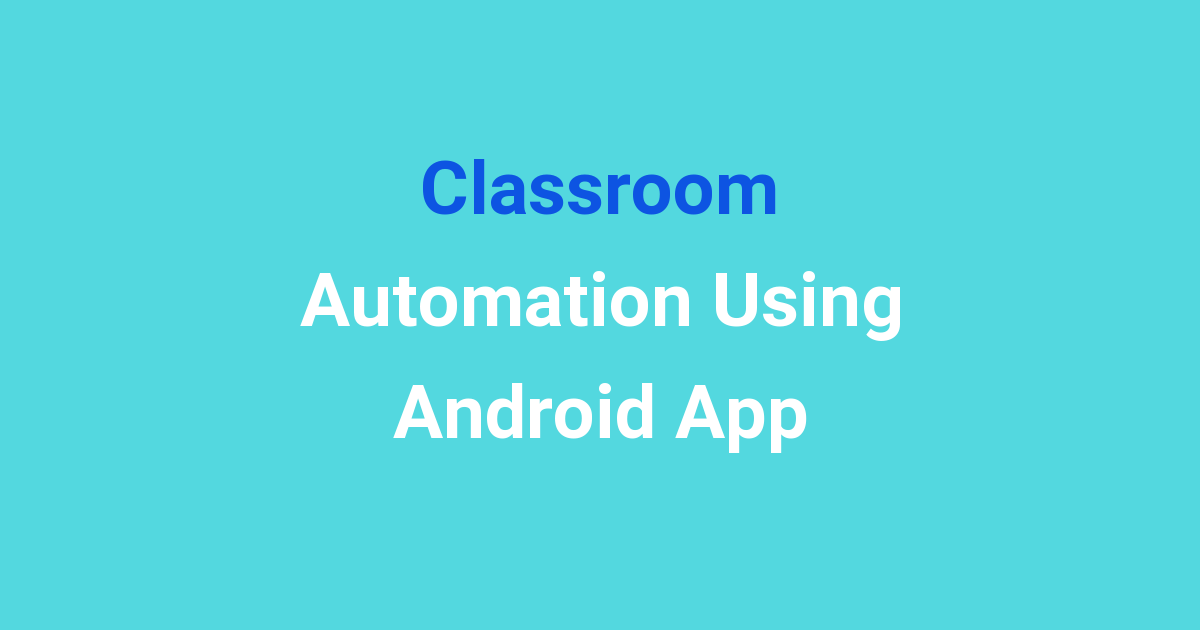Automate your classroom with an android app.
Classroom Automation Using Android App
Introduction
In today’s digital world, technology has revolutionized the way we live and work. From smartphones to smart homes, automation has become an integral part of our daily lives. In the field of education, there is a growing need for automation to streamline classroom processes and enhance learning experiences. With the increasing use of smartphones and mobile applications, leveraging an Android app for classroom automation can significantly improve the efficiency and effectiveness of teaching and learning.
Problem Statement
The traditional classroom setting often relies on manual processes for tasks such as attendance tracking, resource allocation, and communication. This can be time-consuming and prone to errors. Teachers often struggle to manage these administrative tasks while also delivering quality education to students. Students, on the other hand, face challenges in accessing course materials, submitting assignments, and communicating with their peers and instructors. This inefficiency and lack of communication can hinder the overall learning experience.
Existing System
In the existing system, classroom automation is limited to the use of basic technologies such as projectors, smart boards, and learning management systems. While these tools have improved the teaching and learning process to some extent, there is still a lack of integration and synchronization between different systems. Teachers often have to switch between multiple platforms to manage their tasks, leading to duplication of effort and confusion. Students also struggle to navigate through various portals to access course content and communicate with their instructors.
Disadvantages
The disadvantages of the existing system include:
1. Lack of integration between different systems
2. Duplication of effort for teachers
3. Difficulty in accessing course materials for students
4. Inefficient communication channels
5. Limited automation of administrative tasks
6. Prone to errors and delays
Proposed System
The proposed system aims to address these challenges by developing an Android app for classroom automation. This app will serve as a centralized platform for teachers, students, and administrators to manage various classroom processes efficiently. The app will include features such as attendance tracking, course material access, assignment submission, communication tools, and administrative task automation. By integrating these features into one app, we can streamline the teaching and learning process and enhance the overall classroom experience.
Advantages
The advantages of the proposed system include:
1. Centralized platform for all classroom processes
2. Improved efficiency in managing administrative tasks
3. Seamless communication between teachers, students, and administrators
4. Easy access to course materials and resources
5. Automated processes for attendance tracking and assignment submission
6. Enhanced learning experience for students
Features
The key features of the Android app for classroom automation include:
1. Attendance tracking: Teachers can easily take attendance and monitor student participation in real-time.
2. Course material access: Students can access lecture notes, presentations, and other course materials through the app.
3. Assignment submission: Students can submit assignments digitally and receive feedback from teachers.
4. Communication tools: Teachers and students can communicate through chat, email, and discussion forums within the app.
5. Administrative task automation: The app can automate tasks such as timetable management, resource allocation, and grading.
6. Notifications: Users can receive alerts and reminders for upcoming deadlines and events.
Conclusion
In conclusion, the development of an Android app for classroom automation has the potential to revolutionize the way we teach and learn. By addressing the limitations of the existing system and leveraging the power of mobile technology, we can create a more efficient and effective learning environment. This app will not only streamline classroom processes but also enhance communication, access to resources, and overall student engagement. With further research and development, we can make classroom automation using Android apps a reality in engineering colleges and beyond. Let’s embrace the future of education with technology!

